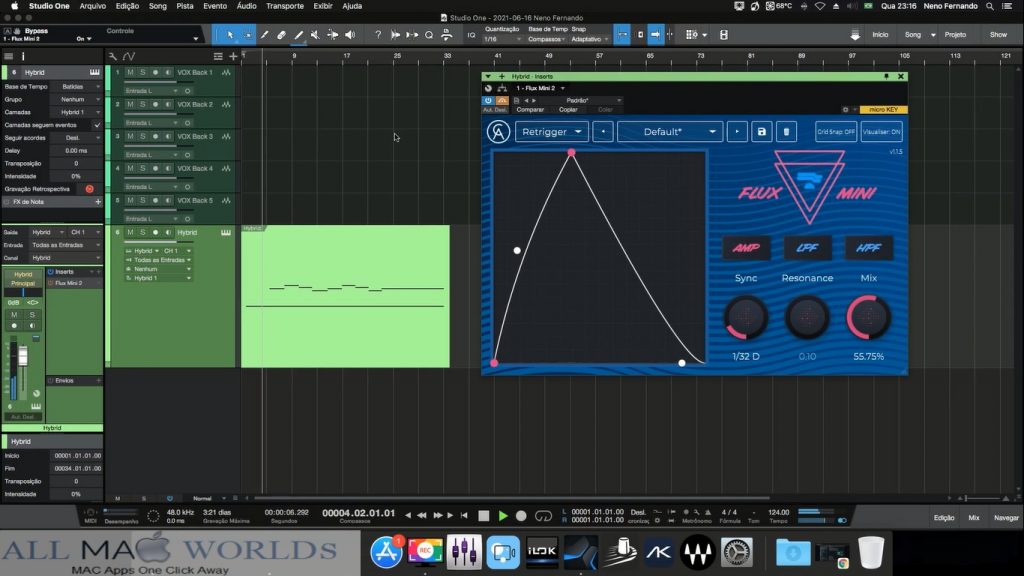
You’ve got a safe, controlled track you think you’re happy with, but you have to ask yourself… ‘Does it Schlap?’ Also inherently in RMS detection, there is a slight delay in compression which allows the initial, early transients to sneak through uncompressed so they keep their punch. The RMS detection means that Schlap detects the average loudness of a signal, resulting in sudden short peaks being uncompressed so that they can attack hard and sound heavy hitting. The compressor uses a program-dependent attack and release influenced by old hardware which makes the compression sound characterful and dynamic. If you want your tracks to be energetic, in-your-face and bold, make ‘em ‘Schlap’.

It takes inspiration from hardware RMS compressors of the past and evolves them into a modern setting. Schlap is a characterful, colourful and aggressive sounding program-dependent AUv3, IAA & standalone compressor. The ratio control operates in four ranges: 0.1: 1 to 0.9: 1 for expansion and gate effects 1: 1 to 20: 1 for standard compression 00: 1 for infinite compression limitation and -20: 1 to -1: 1 for generic over-compression.Īll in all, it is an interesting compressor with a new take on old concepts and a lot of versatility.International Joke Day 2023 Sale (ends 21st July 2023) Schlap’s clean graphical interface includes input level, threshold, ratio, and curvature controls for the compressor section. Another set of controls are for the side chain signal – you can select an internal filter or feed an external sound and then apply variable high and low pass filters. Auto-Gain and Stereo Link options are available above the side chain section.Īn output level knob and three visualizers complete the interface.


Schlap – Cool, Aggressive Compressor Plugin Caelum describes Schlap as “distinctive, colorful and aggressive sounding” compressor. This is a modern take on vintage software-dependent compressors with a user interface that looks overtly digital but hides the analog soul. The program-dependent compressor automatically adjusts the attack and release parameters by detecting the peak RMS of the average volume level of the incoming sound. Thus, sudden short peaks and early transients remain uncompressed and compensate for the harsh sound.


 0 kommentar(er)
0 kommentar(er)
